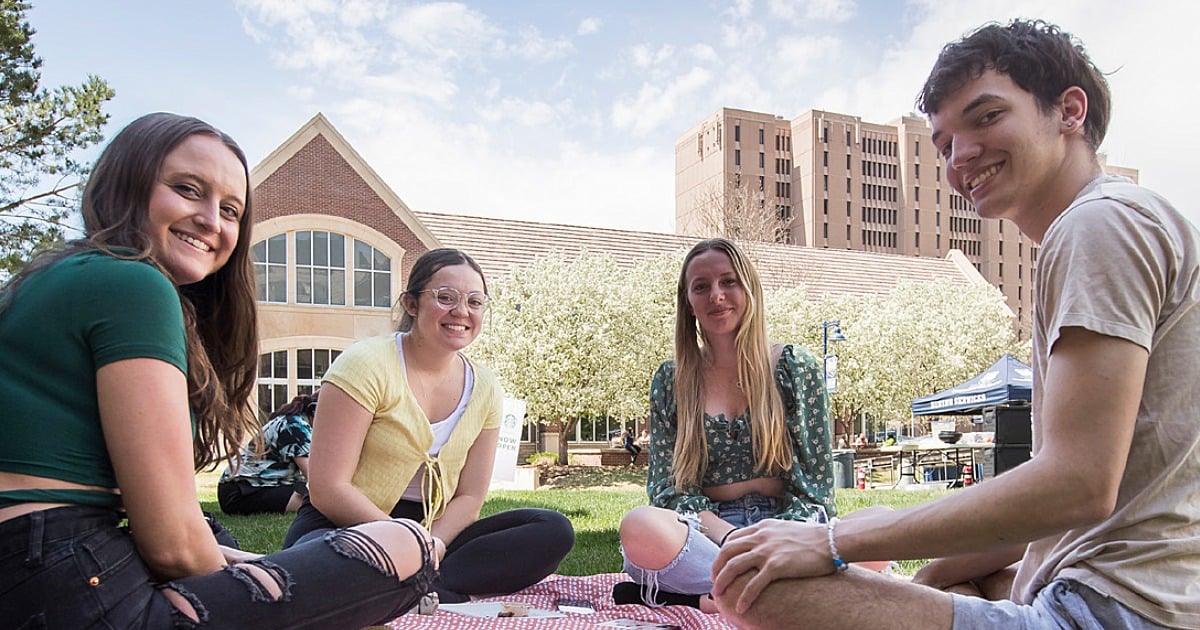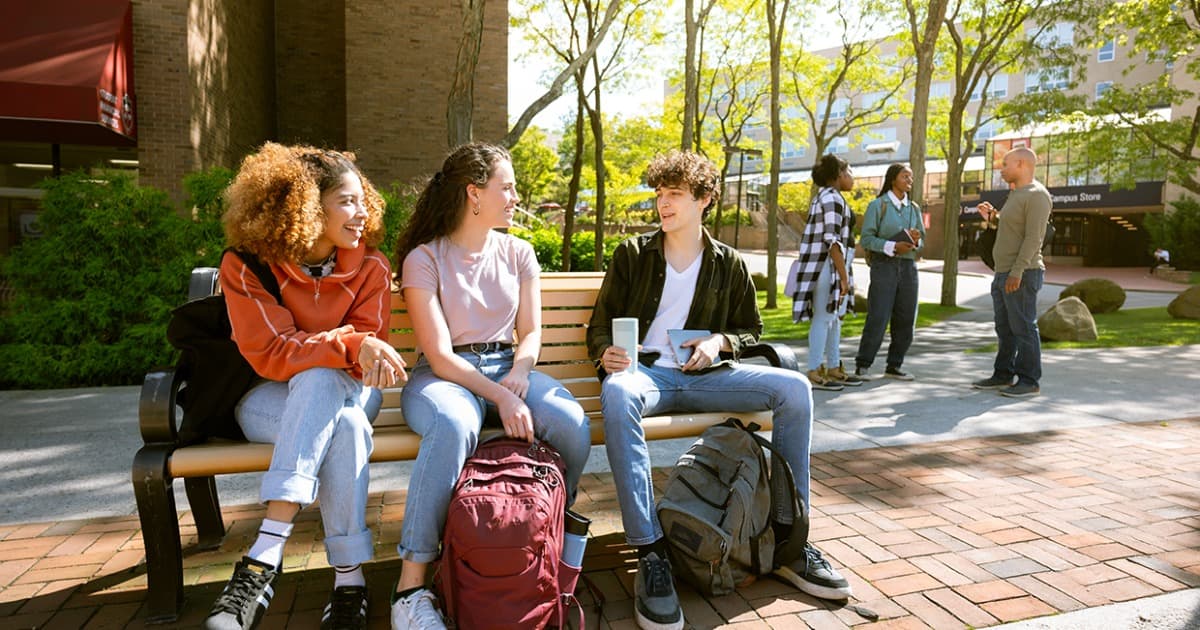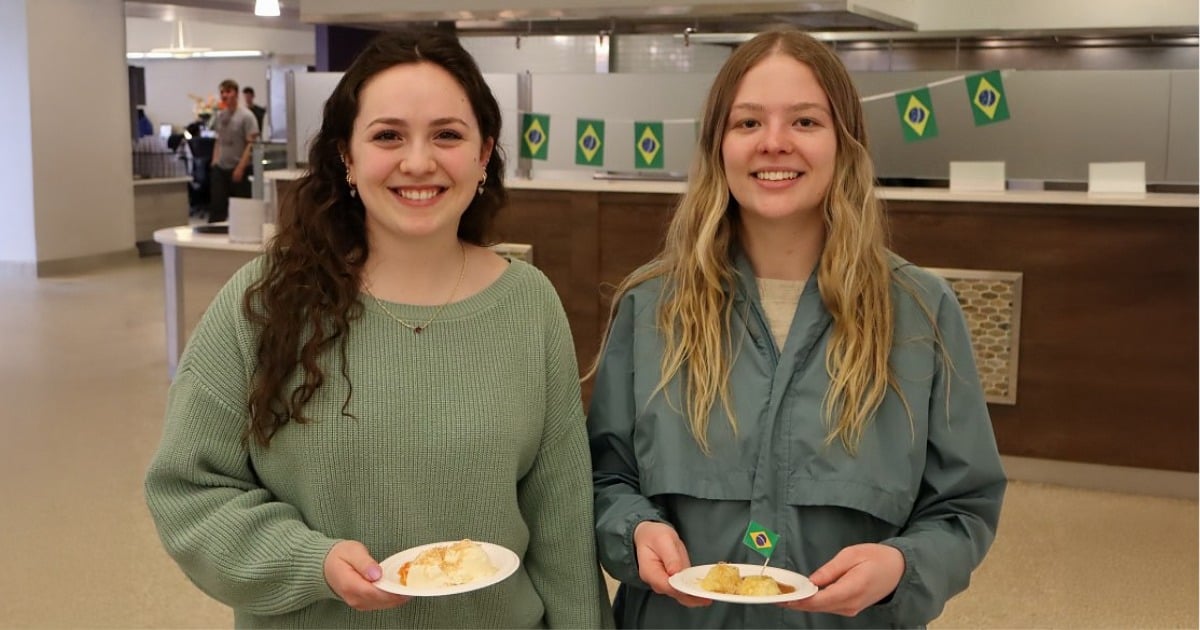Campus
Cultural Cuisine That Supports Belonging at UNC


As a parent of two very different kids, I’ve learned that no two paths to learning look the same. My daughter, Parker, is a social butterfly who thrives on the energy of her varsity cheer squad and a tight-knit group of friends. My son, Hayden, is on the autism spectrum and struggles with social anxiety — so he would rather be in nature with his thoughts and with his Maine Coon, Kinji, than in a crowded cafeteria.
That contrast became abundantly clear during the pandemic. While Parker bounced back into her social circles without skipping a beat, Hayden was silently slipping away — so much so that I once found myself driving around in the cold rain, checking every coffee shop and library in our town, panicked because he had vanished. Turns out, his hotspot on his phone went down and the school alerted me that he wasn’t in class. He’d been attending his hybrid classes from a tree stump in the woods. That’s where he felt safe. Not the classroom. Not the lunch table. The woods. Regardless of weather.
That day changed everything for me.
It’s when the concept of belonging became especially real —because when students don’t feel like they belong, they disappear, even if they’re right in front of us.”
That’s one of the reasons our work with Sodexo’s Student Lifestyle Survey (SLS) is so important. Every two years, we check in directly with higher education students — and in 2024, with their parents — to understand how today’s college experience really feels. This complements the data we gather every quarter when we engage directly with students on our Quad Squad insights committee to make sure we're getting real-time feedback.
Here's the key: we’re constantly gathering insights from students themselves to guide our decisions. The combination of quarterly feedback and an in-depth SLS survey helps us understand exactly what today’s college experience feels like. We’re not making guesses — our actions are backed by data. And let me tell you: what parents think is happening often doesn’t match what’s actually going on.
We surveyed 347 parents this year, and the results were eye-opening. While 90% of parents said they’re satisfied with their child’s life in college, only 60% of students said the same. One in three students reported that they had considered dropping out — yet only 17% of parents believed their child had ever felt that way.
 This kind of gap doesn’t stem from indifference. It stems from optimism. From hope. As parents, we want to believe our kids are okay. We want to trust that they’re getting what they need from their college experience. But this data tells us we may not always be seeing the full picture. Parents were nearly twice as likely as students to promote their child’s college to others, which shows a disconnect between perception and reality.
This kind of gap doesn’t stem from indifference. It stems from optimism. From hope. As parents, we want to believe our kids are okay. We want to trust that they’re getting what they need from their college experience. But this data tells us we may not always be seeing the full picture. Parents were nearly twice as likely as students to promote their child’s college to others, which shows a disconnect between perception and reality.
What we’ve learned? Feeling seen, supported and safe matters just as much as academics or finances. And it’s a key reason why students either stay and succeed — or quietly fade out.
At Sodexo, we use these insights to design better campus experiences. Because it turns out, small moments — like how and where students eat — have a big impact on whether or not they feel connected.
Campus dining service satisfaction rose to 54% among students in 2024 — up from 40% in 2022. That’s progress. But parents once again rated the experience more favorably, with 68% saying they were satisfied with the food options available to their child. It’s another sign that families may not always see what students are experiencing day to day.
Still, the data confirms that a strong dining experience is a critical connector. Students who were on a meal plan for three years were 28% more likely to get involved on campus than those who weren’t. That kind of engagement builds connection, and connection builds resilience.
When a student tells us they can finally eat in the dining hall with friends — because our chef and dietitian created a safe, allergen-free plan just for them — that’s a moment that matters. I’ve seen the joy, the relief and the hope in both students and parents, realizing that we’ve got their backs. That their child doesn’t have to navigate college alone.
For Parker, belonging might be a venti Strawberry Acai Lemonade with no berries and light ice. For Hayden, it might be a quiet space in the dining hall or a comfort dish. We build dining experiences that reflect those differences — whether it be bustling community spaces built on connection or campus convenience options like mobile ordering with a quick pick-up window. Beyond physical spaces, offering culturally inclusive menus, food allergy accommodations and neurodivergent-friendly environments can make a big difference, too.
And it goes beyond dining. One of my favorite stories from our SLS research happened at SUNY Oneonta with very astute partner, Diane Williams. While reviewing the data from the SLS, she noticed that 82% of students said campus friendliness influenced where they chose to enroll — yet new students were eating boxed lunches, on-the-go between their orientation sessions. There is value in everyday convenience for students — we know that from our research too — but this was different. It was a disconnect that the team worked together to solve — immediately planning for longer, shared meals that encouraged socializing during orientation. It’s a simple shift with the power to spark belonging on day one.
Whether you’re a campus leader, a parent or a student yourself, we all want the same thing: to know it’s all going to be okay. That students will find their people, their passion and their place in this world. That someone will notice if they go missing — not just from class, but from themselves.
As parents, we may not always have the full picture. But that’s where our work at Sodexo makes a difference — helping institutions see the unseen, serve the unmet needs and support every student’s journey toward belonging.
Because college isn’t just about a degree. It’s about discovering who you are — and knowing that you matter.
Explore the full findings from the 2024 Student Lifestyle Survey to see how insights from both students and parents are shaping the future of campus life.
Since 2004, the Sodexo Student Lifestyle Survey has been a resource for understanding generational changes, identifying students’ evolving needs, and discovering the drivers of student engagement.
Cultural Cuisine That Supports Belonging at UNC

Creating Connection Points & Strengthening Community

Confidence, Culture, and Connection: How Sodexo Helps Students Thrive Beyond the Classroom

Helping College Students Find Balance Between Wellness and Comfort
